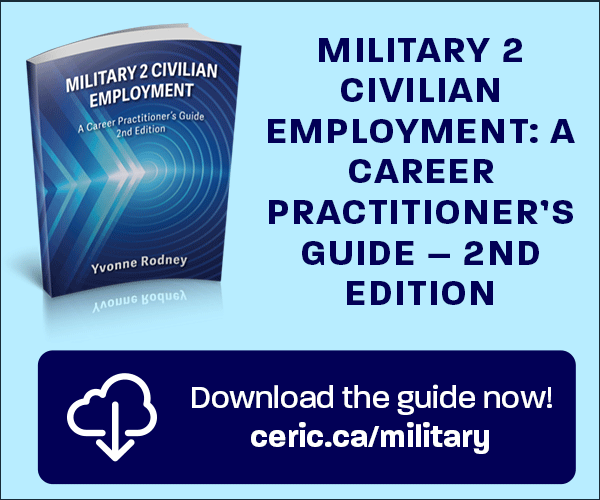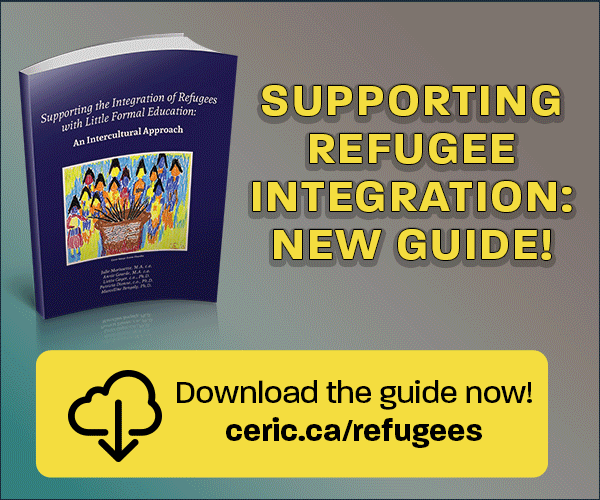An Exploration of Work-Life Wellness and Remote Work During and Beyond COVID-19
Keywords:
work-life wellness, work-life balance, covid-19, coronavirus, remote work, new workplace, distributed work, flexible work, flexworkAbstract
Understanding work-life wellness contributes to improving the physical health, mental health, and productivity of remote workers. Due to physical distancing guidelines associated with the COVID-19 pandemic, many employees have been working from home, often without adequate training and resources. How has the work-life wellness of remote workers been impacted by this rapid transition to remote work, and how can work-life wellness be improved during and beyond these unprecedented times? Scholarly analyses about COVID-19 and remote work were reviewed, along with publications about remote work and work-life wellness. Literature indicates that the work-life wellness of remote workers could be influenced by lack of organizational supports during the transition to remote work, combined with COVID-19 related stress. Beyond the pandemic, organizations and employees will need support to find suitable remote work plans. Career development practitioners can assist clients by being aware of how the transition to remote work may be further complicated by home dynamics, COVID stress, overworking, and challenges collaborating. More research is needed to better support the new remote workforce, including choosing the most relevant construct to describe the relationship between work and life, understanding how COVID stress influences work-life wellness in the long term, and testing related training programs
References
Agrawal, S. (2014). Work life balance: A study of small entrepreneurs (Order No. 27531278).Available from ProQuest Dissertations & Theses Global. (2314067019).
Anderson, A. J., Kaplan, S. A., & Vega, R. P. (2015). The impact of telework on emotionalexperience: when, and for whom, does telework improve daily affective well-being? European Journal of Work and Organizational Psychology, 24(6), 882–897. https://doi.org/10.1080/1359432X.2014.966086
Arora, P. & Suri, D. (2020). Redefining, relooking, redesigning, and reincorporating HRD in the post Covid 19 context and thereafter. Human Resource Development International, 1-14.
Blount, Y., & Gloet, M. (2017). Anywhere working and the new era of telecommuting. https://doi.org/10.4018/978-1 5225-2328-4
Brenan, M. (2020, August 18). U.S. workers discovering affinity for remote work. Retrieved August 22, 2020 from https://news.gallup.com/poll/306695/workers-discovering-affinity-remote-work.aspx
Brower, T. (2014). Bring work to life by bringing life to work. New York: Routledge, https://doi.org/10.4324/9781315230511
Brower, T. (2012). Making it work: corporate executive opinions on work-life support. 73,1089. http://search.ebscohost.com/login.aspx?direc
Campbell, A. M. (2020). An increasing risk of family violence during the Covid-19 pandemic: Strengthening community collaborations to save lives. Forensic Science International Reports, 2. http://dx.doi.org/10.1016/j.fsir.2020.100089
Canadian Standards and Guidelines for Career Development Practitioners (2004). Code of ethics. Retrieved September 27, 2020 from https://career-dev-guidelines.org/the-standards guidelines/code-of-ethics/
Cave, K. A. (2019). A work-life balance training intervention: motivating training transfer (Order No. 13811703). Available from ProQuest Dissertations & Theses Global. (2268344489).
Carpenter, J. (2017). Work-life balance is important but we need a better word for it. CNN Money. https://money.cnn.com/2017/10/11/pf/women-work-life-balance/index.html
Chong, S., Huang, Y., & Chang, C. H. D. (2020). Supporting interdependent telework employees: A moderated-mediation model linking daily COVID-19 task setbacks to next day work withdrawal. Journal of Applied Psychology.
Conference Board of Canada. (2020, June 29). Working through covid-19 remote work support survey. Retrieved July 25, 2020, from https://www.conferenceboard.ca/focus areas/human-resources/2020/working-through-covid-19/remote-work support?AspxAutoDetectCookieSupport=1
CPA Practice Advisor. (2020). Covid-normal: Worker stress, work/life balance and productivity start to stabilize. Cygnus Business Media, 2020-06-01.
Cuthbertson, M. & Ashton, E. (2020). How to maintain employee engagement and productivity during COVID-19. MaRS Discovery District.
Dawson, T. (2020, March 24). COVID-19: Ontario and Quebec order non-essential businesses closed after spike in coronavirus totals. Retrieved July 25, 2020, from https://nationalpost.com/news/covid-19-ontario-and-quebec-order-non-essential businesses-closed-after-spike-in-coronavirus-totals
Deng, Z., Morisette, R., & Messacar, D. (2020, May 28). Running the economy remotely: Potential for working from home during and after COVID-19. Retrieved August 23, 2020, from https://www150.statcan.gc.ca/n1/pub/45-28-0001/2020001/article/00026 eng.htm
Di Domenico, M., Daniel, E., & Nunan, D. (2014). ‘Mental mobility’ in the digital age: Entrepreneurs and the online home-based business. New Technology Work And Employment, 29(3), 266-281.
Dingel, J. & Neiman, B. (2020). “How many jobs can be done at home?” white paper. Becker Friedman Institute for Economics at the University of Chicago. https://bfi.uchicago.edu/wp-content/uploads/BFI_WhitePaper_Dingel_Neiman_3.2020.pdf.
Duxbury, L., & Higgins, C. (2012). Revisiting work-life issues in Canada: the 2012 national study on balancing work and caregiving in Canada [Report One] (2012 National Study on Balancing Work and Caregiving in Canada). Sprott School of Business, Carleton University.
Ezzedeen, S., & Zikic, J. (2017). Finding balance amid boundarylessness: An interpretive study of entrepreneurial work–life balance and boundary management. Journal of Family Issues, 38(11), 1546-1576.
Fedakova, D., & Istonova, L. (2017). Slovak IT-employees and new ways of working: Impact on work-family borders and work-family balance. Ceskoslovenska Psychologie, 61(1),68–83.
Felstead, A., & Henseke, G. (2017). Assessing the growth of remote working and its consequences for effort, well-being and work-life balance. New Technology, Work and Employment, 32(3), 195–212. https://doi.org/10.1111/ntwe.12097
Franklin, M. (2020, July 03). COVID-19 pandemic has changed the way we work, but it likely won’t stay that way. Retrieved July 25, 2020, from https://calgary.ctvnews.ca/covi-19pandemic-has-changed-the-way-we-work-but-it-likely-won-t-stay-that-way-1.5010002
Gadeyne, N., Verbruggen, M., Delanoeije, J., & De Cooman, R. (2018). All wired, all tired? Work-related ICT-use outside work hours and work-to-home conflict: The role of integration preference, integration norms and work demands. Journal of Vocational Behavior, 107, 86-99.
Gambhir, M. K. 2020. “Lockdown: Is Work-Life Balance Impossible while Working from Home ?” The Quint, 21 May. Accessed 24 May 2020. https://www.thequint.com/voices/opinion/work-from-home-work-life-balance-challenges-pressures-domestic-chores-idea of-leisure
Giovanis, E. (2018). Are Women Happier When Their Spouse is Teleworker? Journal ofHappiness Studies, 19(3), 719–754. https://doi.org/10.1007/s10902-017-9847-0
Global Workplace Analytics. (2020, June 08). How many people could work-from-home. Retrieved August 22, 2020, from https://globalworkplaceanalytics.com/how-many-people-could-work-from-home
Grandey, A. A., Cordeiro, B. L., & Crouter, A. C. (2005). A longitudinal and multi-source test of the work-family conflict and job satisfaction relationship. Journal of Occupational and Organizational Psychology, 78(3), 305–323. https://doi. org/10.1348/09 6317905X26769
Grant, C. A., Wallace, L. M., Spurgeon, P. C., Tramontano, C., & Charalampous, M. (2019). Construction and initial validation of the E-Work Life Scale to measure remote eworking. Employee Relations, 41(1), 16–33.
Grant, C. A., Wallace, L. M., & Spurgeon, P. C. (2013). An exploration of the psychological factors affecting remote e-worker’s job effectiveness, well-being and work-life balance. Employee Relations, 35(5), 527–546. https://doi.org/10.1108/ER-08-2012-0059
Haar, J., Russo, M., Suñe, A., & Ollier-Malaterre, A. (2014). Outcomes of work–life balance on job satisfaction, life satisfaction and mental health: A study across seven cultures. Journal of Vocational Behavior, 85(3), 361-373.
Hill, E. J., Ferris, M., & Märtinson, V. (2003). Does it matter where you work? A comparison of how three work venues (traditional office, virtual office, and home office) influence aspects of work and personal/family life. Journal of Vocational Behavior, 63(2), 220–241. https://doi.org/10.1016/S0001-8791(03)00042-3
Jedras, J. (2013). Mobile work is increasingly the norm: IDC Canada. Retrieved August 22,2020, from https://channeldailynews.com/news/mobile-work-is-increasingly-the-normidccanada/22291
Johri, A., & Teo, H. (2018). Achieving Equilibrium through Coworking: Work-Life Balance in FLOSS through Multiple Spaces and Media Use. Proceedings of the 14th International Symposium on Open Collaboration, 1-11.
Kelly, J. (2020). How the Coronavirus Outbreak Will Change Careers and Lives for the Foreseeable Future. Forbes.
Lunau, T., Bambra, C., Eikemo, T., Van der Wel, K., & Dragano, N. (2014). A balancing act? Work-life balance, health and well-being in European welfare states. European Journal of Public Health, 24(3), 422-427.
Martinez-Amador, J. (2016). Remote and on-site knowledge worker productivity and engagement: a comparative study of the effect of virtual intensity and work location preference. (Electronic Thesis or Dissertation). Retrieved from https://etd.ohiolink.edu/
Montano, R. L., & Acebes, K. M. (2020). Covid stress predicts depression, anxiety and stress symptoms of Filipino respondents. International Journal of Research in Business and Social Science (2147- 4478), 9(4), 78-103. https://doi.org/10.20525/ijrbs.v9i4.773
Overla, M. (2017). The explanatory relationship between work-life balance and non-work factors of entrepreneurs (doctoral dissertation). Available from ProQuest Dissertations and Theses database. (No. 10618976).
Redekopp, D. E., & Huston, M. (2020) Strengthening mental health through effective career development: A practitioner’s guide. CERIC. Retrieved September 27, 2020 from https://ceric.ca/publications/strengthening-mental-health-through-effective-career development-a-practitioners-guide/
Reynolds, B. (2017, June 21). Here are the Key Findings in the 2017 State of Telecommuting Report. Retrieved August 22, 2020, from https://www.flexjobs.com/employer-blog/key findings-2017-state-of-telecommuting-report/
Rudolph, C.W., Allan, B., Clark, M., Hertel, G., Hirschi, A., Kunze, F., Shockley, K., Shoss, M., Sonnentag, S., & Zacher, H. (2020). Pandemics: Implications for research and practice in industrial and organizational psychology. Industrial and Organizational Psychology: Perspectives on Science and Practice.
Saghafian, M. & O’Neill, D. (2018). A phenomenological study of teamwork in online and faceto-face student teams. Higher Education, 75(1), 57-73.
Siqueira, M. V. S., Dias, C. A., & Medeiros, B. N. (2019). Loneliness and contemporary work: Multiple perspectives of analysis. RAM. Revista de Administração Mackenzie, 20(2), 125. https://doi.org/10.1590/1678-6971/eramg190058
Smith, S. A., Patmos, A., & Pitts, M. J. (2018). Communication and teleworking: A study of communication channel satisfaction, personality, and job satisfaction for teleworking employees. International Journal of Business Communication, 55(1), 44–68. https://doi.org/10.1177/2329488 415589101
Soni, P., & Bakhru, K. M. (2019). Understanding triangulated collaboration of work-life balance, personality traits and eudaimonic well-being. Problems and Perspectives in Management, 17(2), 63–82. https://doi.org/10.21511/ppm.17(2).2019.05
Taylor, S., Landry, C., Paluszek, M., Fergus, T. A., McKay, D., & Asmundson, G. J. (2020). Development and initial validation of the COVID stress scales. Journal of Anxiety Disorders, 102232. https://doi.org/10.1016/j.janxdis.2020.102232
Usher, K., Bhullar, N., Durkin, J., Gyamfi, N. & Jackson, D. (2020). Family violence and COVID‐19: Increased vulnerability and reduced options for support. International Journal of Mental Health Nursing, 29(4), 549-552. doi:10.1111/inm.12735
Vilhelmson, B., & Thulin, E. (2016). Who and where are the flexible workers? Exploring the current diffusion of telework in Sweden. New Technology, Work and Employment, 31(1), 77–96. https://doi.org/10.1111/ntwe.12060
Waters, K., Stoothoff, J., Gibralter, J., & Thompson, G. (2016). The Lived Experience of Teleworking: A case study from the higher education environment. ProQuest Dissertations and Theses.
Weikle, B. (2018). Telecommuting on the rise to meet challenges of real estate market, labour shortage. CBC News. Retrieved from https://www.cbc.ca/news
World Health Organization. (2020, July 24). Coronavirus disease (COVID-19). Retrieved September 30, 2020, from https://www.who.int/emergencies/diseases/novel-coronavirus 2019
World Health Organization. (2020, April 17). Q&A on coronaviruses (COVID-19). Retrieved November 28, 2020, from https://www.who.int/emergencies/
diseases/novel-coronavirus-2019/question-and-answers-hub
Wepfer, A. G., Allen, T. D., Brauchli, R., Jenny, G. J., & Bauer, G. F. (2018). Work-life boundaries and well-being: Does work-to-life integration impair well-being through lack of recovery? Journal of Business and Psychology, 33(6), 727–740. https://doi.org/10.1007/s10869-017-9520-y
Yang, L., Jaffe, S., Holtz, D., Suri, S., Sinha, S., Weston, J., ... & Hecht, B. (2020). How Work From Home Affects Collaboration: A Large-Scale Study of Information Workers in a Natural Experiment During COVID-19. arXiv preprint arXiv:2007.15584.
Young, R. A., Domene, J. F., & Valach, L. (Eds.) (2015). Counseling and action: Toward life enhancing work, relationships and identity. Springer. https://doi.org/10.1007/978-1-4939 0773-1

Downloads
Published
How to Cite
Issue
Section
License
Copyright (c) 2021 Canadian Journal of Career Development

This work is licensed under a Creative Commons Attribution-NonCommercial-NoDerivatives 4.0 International License.
















